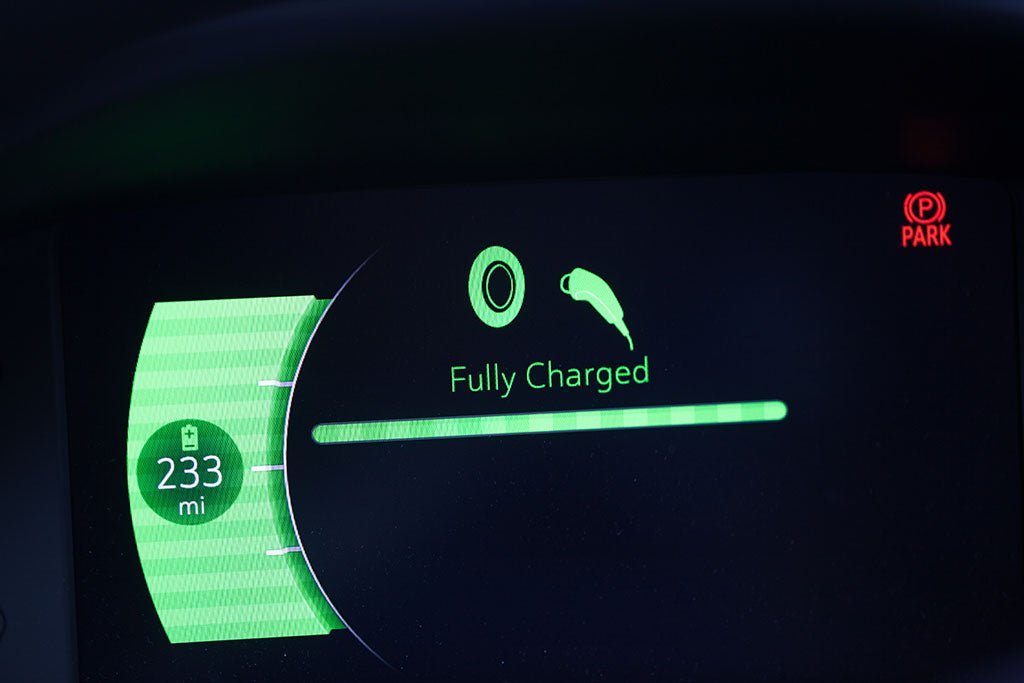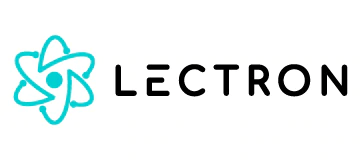
Types of EV Charging Stations
Electric vehicles (EVs) are no longer the future—they are the now. With more people opting for electric cars over traditional gas-powered vehicles, understanding types of EV charging stations is crucial for both new and seasoned EV drivers. Charging your electric vehicle is not as simple as topping off a gas tank. It involves multiple technologies, charging speeds, connector types, and infrastructure components that collectively make up what is called electric vehicle supply equipment (EVSE).
In this comprehensive guide, we break down EV charging levels, technologies, charging infrastructure, and give you insights into public charging, home charging, and more. We'll also explore topics like DC fast charging, AC charging, and how battery capacity and power output influence miles of range per hour.
Why EV Charging Stations Matter
Electric vehicle charging is essential for the operation of EVs. Unlike conventional fuel tanks, an EV battery stores energy that must be replenished via an electric vehicle charging station. As EV adoption accelerates across North America and beyond, a strong, reliable charging network becomes increasingly critical. Whether at home, work, or a retail location like shopping centers, EV drivers depend on charging stations for convenience, safety, and performance.
What sets EV charging apart is its flexibility in how and where it can happen—from overnight charging at home to rapid charging at public chargers installed along highways. As new EV models hit the road with larger battery packs and longer electric range, the infrastructure that supports them must keep pace. This includes not only expanding the number of charging ports, but also enhancing charging speeds, embracing direct current fast charging, and offering compatibility with multiple connectors.
Types of EV Charging Stations
Understanding the different types of EV charging stations and the role of each EV charger is key to getting the most out of your electric vehicle. Whether you're at home, work, or on the go, knowing the charging options available helps you plan your routes, reduce downtime, and extend your battery life. Each station type has its unique advantages and is suited to different use cases, depending on your charging needs, driving habits, and daily routine.
Home Charging Stations

Home charging is the most common way for EV owners to replenish their batteries. These are private charging stations that offer flexibility and cost savings. They usually operate at either Level 1 or Level 2 charging speeds.
-
Level 1 Charging (Slow Charging): Uses standard 120V AC power outlets. This EV charger offers slow charging, taking up to 50 hours to fully charge a battery pack, providing about 2 to 5 miles of range per hour. Level 1 charging can take 22-40 hours to fully charge a standard battery electric vehicle (BEV) from empty.
-
Level 2 Charging: Utilizes 240V electrical service, much like your dryer or oven. With a typical power output of 7kW to 19kW, Level 2 chargers can replenish 10 to 20 miles of range per hour. Overnight charging becomes efficient and reliable at this level. Level 2 chargers can charge a BEV to 80 percent in 4-10 hours and are common in public locations.
Workplace Charging Stations

Workplace charging is ideal for employees and is typically set up by employers in company parking lots. Like home chargers, these often fall under Level 2 classification and use AC charging.
Benefits:
-
Enables EV drivers to double their electric range using workplace and home charging combined.
-
Encourages more employees to opt for EVs.
Public Charging Stations
These installed public chargers are found in shopping centers, parking garages, heavy traffic corridors, and other public spaces. Public stations can range from Level 1 to DC fast charging.
-
Destination chargers: Usually Level 2, ideal for locations where cars are parked for hours.
-
DC Fast Chargers (Level 3): Designed for rapid energy transfer using direct current (DC power). They can charge a battery up to 80% in as little as 15 to 60 minutes.
EV Charging Station Technologies
To truly understand how electric vehicle charging stations operate, it's important to look beyond just their physical locations. The technology behind each charger determines how fast your vehicle charges, the type of power delivered, and what kind of connector types are compatible. Charging stations are typically divided into two main technology categories: AC charging and DC fast charging. Each has a specific use case and benefits depending on where and how you charge your electric car.
Charging Stations
AC charging is the standard for home charging and workplace charging.
-
Connector Types: J1772 is the standard connector for non-Tesla vehicles in North America.
-
EV Charging Speed: Depends on battery capacity and electrical service; typically delivers between 3 to 22 kW.
-
Use Case: Ideal for overnight or extended-duration parking. Most private charging stations and destination chargers fall into this category.
DC Charging Stations

Direct current fast charging (DCFC) provides significantly faster charging times and is especially useful for public stations along heavy traffic corridors.
-
Connector Types: Includes CCS (Combined Charging System), CHAdeMO, and Tesla connectors.
-
Maximum Power: Can range from 50kW up to 350kW.
-
Use Case: Ideal for long-distance travel, fleet operations, and locations where drivers need to get back on the road quickly. DC chargers are also becoming common at shopping centers, rest stops, and high-traffic public venues.
These two technologies together form the backbone of modern EV charging infrastructure, allowing flexibility, speed, and accessibility for all kinds of EVs.
Charging Speed and Time
Charging speed and time are among the most critical factors for EV owners. How long your electric vehicle takes to recharge can influence everything from your daily routine to road trip planning and emergency preparedness. Unlike filling up a fuel tank, charging involves transferring electricity into a battery pack, and this process varies widely based on several technical and environmental factors.
Charge Time
Understanding how long it takes to recharge your EV is essential for effective energy management. Charging time depends on a combination of factors, including:
-
Battery capacity: Larger battery packs take more time to charge.
-
Charger power output: Higher kilowatt (kW) ratings deliver faster charging.
-
Ambient temperature: Cold weather can slow charging.
-
Battery condition and age: Older batteries may take longer to accept a full charge.
-
Connector and vehicle compatibility: Mismatched connectors or limited onboard charging capacity can affect speed.
Estimated Range per Hour by Charging Level:
-
Level 1 (Slow Charging): 2–5 miles per hour. Ideal for overnight use via a standard 120V wall outlet.
-
Level 2 (Faster Charging): 10–20 miles per hour. Suitable for home and workplace settings using 240V AC charging.
-
Level 3 (DC Fast Charging): 180–240 miles per hour. Best for public, commercial locations using high-voltage DC fast charging. This type of charging offers rapid charging with power outputs over 360 kW.
While these values offer helpful averages, it's important to note that charging often slows as the battery nears full capacity. This is a built-in mechanism to protect the EV battery and extend its lifespan.
Fast Charging

Fast charging typically refers to Level 3 or DC fast chargers, which provide high-powered electricity directly to the battery, bypassing the vehicle's onboard inverter. These chargers are commonly installed along heavy traffic corridors, at shopping centers, rest stops, and other locations where drivers benefit from a rapid boost in range.
Advantages of Fast Charging:
-
Speed: Charge up to 80% in as little as 15–60 minutes depending on battery size.
-
Convenience: Enables long-distance travel with fewer stops.
-
Utility: Supports EV fleets, rideshare services, and busy commuters who can't charge at home.
However, DC fast charging is most efficient when the battery level is low. Charging from 80% to 100% typically takes just as long as the initial 0–80% due to a tapering effect that preserves battery health.
Some modern chargers support load balancing, dynamically allocating power based on usage across multiple connectors. Others draw energy from battery storage or solar panels, helping reduce grid dependency.
As EV technology evolves, so will fast charging capabilities. With the adoption of three phase power, higher maximum power outputs, and expanded charging networks, EV owners can look forward to faster, more efficient charging experiences that rival the convenience of traditional gas stations.
EV Charging Infrastructure
The success of widespread EV adoption depends not only on the availability of vehicles but also on easy access to convenient and fast charging options. From large metropolitan cities to rural towns, the infrastructure that powers EV charging stations is rapidly evolving to keep pace with demand.
Current State of EV Charging Infrastructure
According to the Alternative Fuels Data Center, the United States is home to over 100,000 public charging stations for electric vehicles . This growing network includes:
-
Level 2 chargers in urban residential and commercial zones
-
DC fast chargers strategically placed along interstate highways and heavy traffic corridors
-
Installations that incorporate solar panels and battery storage to enhance grid independence and sustainability
These chargers are supported by a variety of charging networks, including Electrify America, ChargePoint, and Tesla Supercharger Network, providing numerous charge points and making charging infrastructure more accessible and user-friendly.
The Future with NACS Adoption
One of the most transformative developments in the EV industry is the growing adoption of the North American Charging Standard (NACS). Originally developed by Tesla, NACS is rapidly being embraced by other automakers and charging network providers. This shift is poised to unify the EV charging experience across North America and significantly accelerate the electrification of the country.

With a single, universal plug, EV owners will no longer have to worry about whether a station supports CCS, CHAdeMO, or Tesla connectors. But more importantly, Tesla's expansive Supercharger network will become usable by more EV drivers, offering access to some of the most reliable and widespread DC fast chargers in the country.
But before EVs start shipping with native NACS ports—presumably, by the end of the year—early adopters like Ford, Rivian, GM, and Mercedes-Benz have been granted access to V3 and V4 Superchargers via a NACS to CCS adapter. This added more than 17,000 fast charging stalls—mostly in prime locations—to the existing CCS fast charging network.
Conclusion
Whether you're new to electric cars or an experienced EV owner, understanding the types of EV charging stations can optimize your driving experience. From slow charging at home to rapid charging on highways, there are EV chargers for every situation.
Invest in quality electric vehicle supply equipment and remain compliant with guidelines from the environmental protection agency while staying connected with evolving charging networks. Your electric vehicle deserves nothing less than the best in convenience, speed, and sustainability.
FAQs
-
There are three main types of EV chargers: Level 1, Level 2, and Level 3 (DC Fast Charging). Level 1 uses a standard household outlet and is the slowest. Level 2 requires a 240V outlet and is faster. Level 3 or DC Fast Chargers offer the quickest charge times at public stations.
-
J1772 is a standard connector for Level 1 and Level 2 AC charging in North America. CCS (Combined Charging System) supports both AC and DC fast charging and includes additional pins for high-voltage direct current, making it suitable for rapid charging stations.
-
Level 1 chargers use a 120V outlet and are very slow. Level 2 chargers use 240V and provide faster charging, ideal for home and workplace use. Level 3 chargers (DC Fast Charging) offer rapid charging and are typically found at public stations, delivering high power output for quick energy transfer. For more info, check our article on Difference Between Level 1 and Level 2 EV Chargers.
